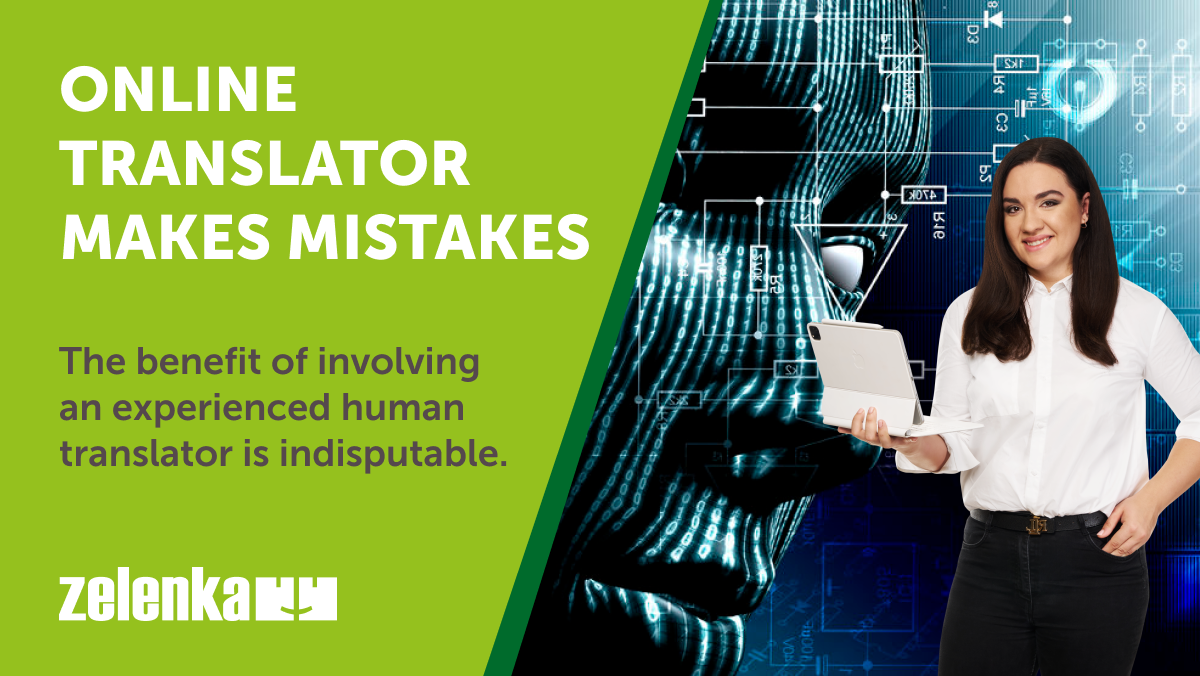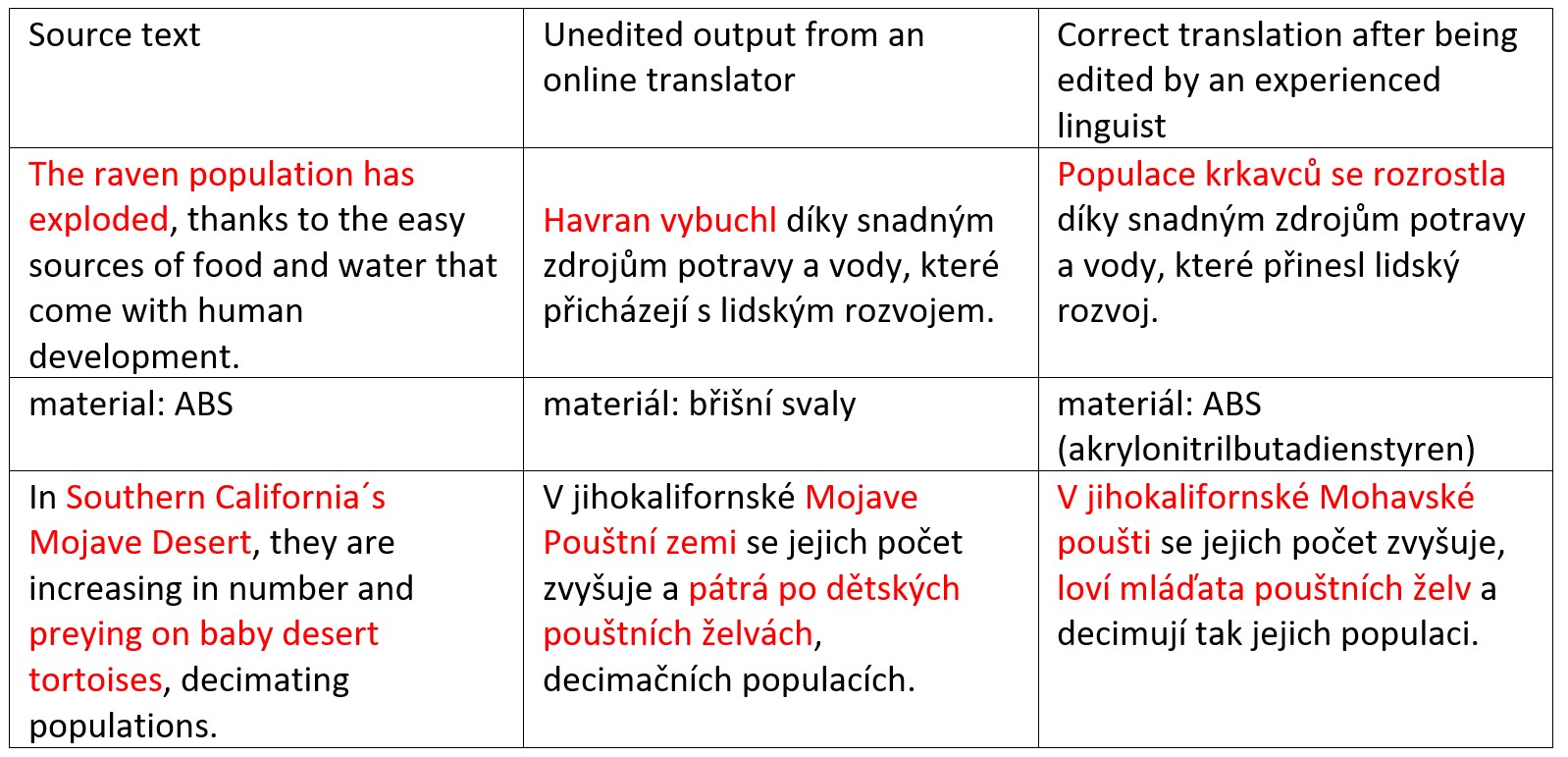Why isn't it good to use raw machine translation output?

Tereza Verbíková
4. 7. 2024You might think that it's the ideal solution for you when you need to translate a large volume of text, are pressed for time, or have a limited budget — to just let artificial intelligence (AI) do the job and try an online translator. It does everything on its own with just a few clicks. And to top it off, it’s free to use.

However, it's not as simple as it may seem at first glance. We wrote about that in the article Can free machine translators do what paid ones can? The answer is simple – no! Freely available machine translators usually have limitations such as a restricted number of characters that can be translated at once, they may share your data with third parties, and you are likely to encounter quality issues with the translations.
If you want to get a good translation, a professional machine translator is certainly a better choice than a free one. This is because professional translators allow integration into Computer-Assisted Translation (CAT) tools, which means you can use your translation memory or established terminological glossary. This has a huge impact on the quality of the final translation you receive.
However, it's still a translation performed by a machine. Despite rapid advancements in artificial intelligence (AI) and ongoing progress in this field, human intervention is necessary to achieve a truly good and reliable text in the target language. Only an experienced translator can elevate the output from a machine translation to a level where you can completely rely on its accuracy.
We will now show you specific examples of the pitfalls that can be hidden in the raw output from an online translator.
We have distinguished 3 categories of errors based on their severity. The first one includes translations that initially seem correct and make perfect sense. However, upon comparison with the source text, significant inaccuracies are revealed.

Green or yellow wire – it may seem insignificant. Such seemingly minor substitutions in your manual or other technical documentation can have catastrophic consequences for property or even health. And not to mention cleaning a machine that should be properly turned off.
Raw or unedited automatically translated text can be incorrect even in terms of context. The offered translation might be correct under certain circumstances, but in the given context, it is inaccurate. These shortcomings arise because automatic translators simply do not consider context.

Examples of errors from the last category often evoke a smile. In the offered unedited output, it's immediately apparent that something went wrong here.

Yes, it's clear right away that these are nonsenses. However, as we demonstrated earlier, the shortcomings aren't always such easily recognizable errors. Even the biggest mistake will go unnoticed if someone doesn't read the entire text diligently and doesn't consider both the context and the original text.
And that's exactly why we do not recommend using unedited machine translation output.
The quality of translations we deliver to our customers is our top priority. Our partners can rest assured that we provide texts at a superior level, without any "exploding ravens.” That's why machine translation without subsequent editing (MT Post Editing, or MTPE) is not included in our service offerings. The benefit of involving an experienced human translator is indisputable.
Do you have any more questions about machine translation (MT)? You might find answers in the Frequently Asked Questions about machine translation. Or you can contact directly Petra Kunovská to email petra.kunovska@zelenka.cz, who will be happy to assist you.

